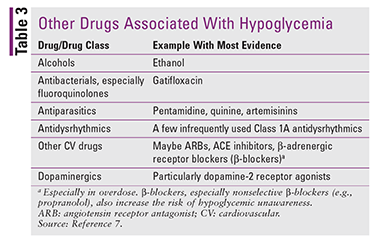why does exercise cause hypoglycemia in diabetics Hyperglycemia and what to do about it
Hey there, Managing your blood sugar level can be tricky, especially if you have diabetes. Low blood sugar or hypoglycemia can be a life-threatening emergency if not treated promptly. In this post, we will discuss how to address a hypoglycemic emergency. Firstly, it is essential to be aware of the symptoms of hypoglycemia. Symptoms include sweating, hunger, trembling, irritability, confusion, and even loss of consciousness. If you or someone around you experiences any of these symptoms, check their blood sugar level immediately. The ideal blood sugar range is usually between 80-130 mg/dL. If the blood sugar level falls below 70 mg/dL, this indicates hypoglycemia. To raise blood sugar levels, you can consume 15-20 grams of carbohydrates quickly. This can be in the form of juice, glucose tablets, or candy. If the person is conscious, give them the carbohydrates we mentioned above and then recheck their blood glucose level after 15 minutes. If the blood sugar level is still low, repeat the process, and keep checking until the blood sugar level returns to normal. However, if the person is unconscious or unable to swallow, do not let them consume anything. If you have glucagon kits available, administer the kit as advised. If you are not sure how to use it, contact your healthcare provider or seek medical attention immediately. It is always recommended to stay prepared for a hypoglycemic emergency. Carry a snack that contains carbohydrates with you at all times. Wear a medical alert bracelet to let people know you have diabetes in case of an emergency. In conclusion, hypoglycemia can be life-threatening if not addressed promptly. It is crucial to be aware of the symptoms and methods to treat it correctly. Ensure you and the people around you with diabetes know how to react in case of an emergency. We hope this information was helpful and remember to take care of your health! Check out the following images to understand more about hypoglycemic emergencies and medical treatments:
Addressing Hypoglycemic Emergencies
 Learn how to address hypoglycemic emergencies to stay prepared in the future.
Learn how to address hypoglycemic emergencies to stay prepared in the future.
Medical Treatment for Diabetes
 Knowing about medical treatments can help you manage your diabetes better. Here’s a helpful chart that explains medical treatments for diabetes.
Knowing about medical treatments can help you manage your diabetes better. Here’s a helpful chart that explains medical treatments for diabetes.
If you are searching about Pin on Medical Treatment you’ve came to the right place. We have 5 Pictures about Pin on Medical Treatment like Pin on Medical Treatment, Hyperglycemia and What to Do About It and also Pin on Whole Food Nutrition. Here it is:
Pin On Medical Treatment
 www.pinterest.comhypoglycemia diabetes verywell anavara verywellhealth
www.pinterest.comhypoglycemia diabetes verywell anavara verywellhealth
Pin On Whole Food Nutrition
 www.pinterest.frhypoglycemia glucose reactive insulin fasting diseases
www.pinterest.frhypoglycemia glucose reactive insulin fasting diseases
Addressing Hypoglycemic Emergencies
 stage.uspharmacist.comhypoglycemic hypoglycemia drugs insulin addressing emergencies evidence
stage.uspharmacist.comhypoglycemic hypoglycemia drugs insulin addressing emergencies evidence
Exercise-Induced Hypoglycemia In Non-Diabetics
 www.hypervibe.comHyperglycemia And What To Do About It
www.hypervibe.comHyperglycemia And What To Do About It
 www.hmpgloballearningnetwork.comhyperglycemia diabetic
www.hmpgloballearningnetwork.comhyperglycemia diabetic
Hypoglycemia glucose reactive insulin fasting diseases. Hypoglycemia diabetes verywell anavara verywellhealth. Addressing hypoglycemic emergencies